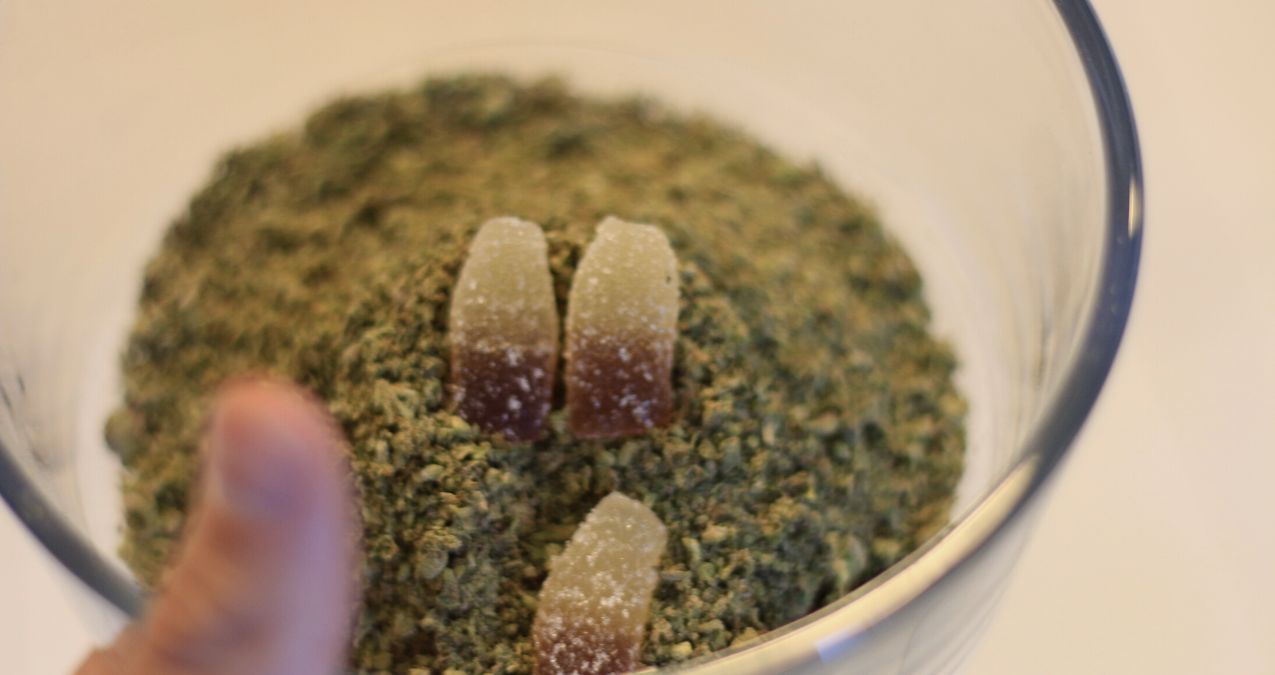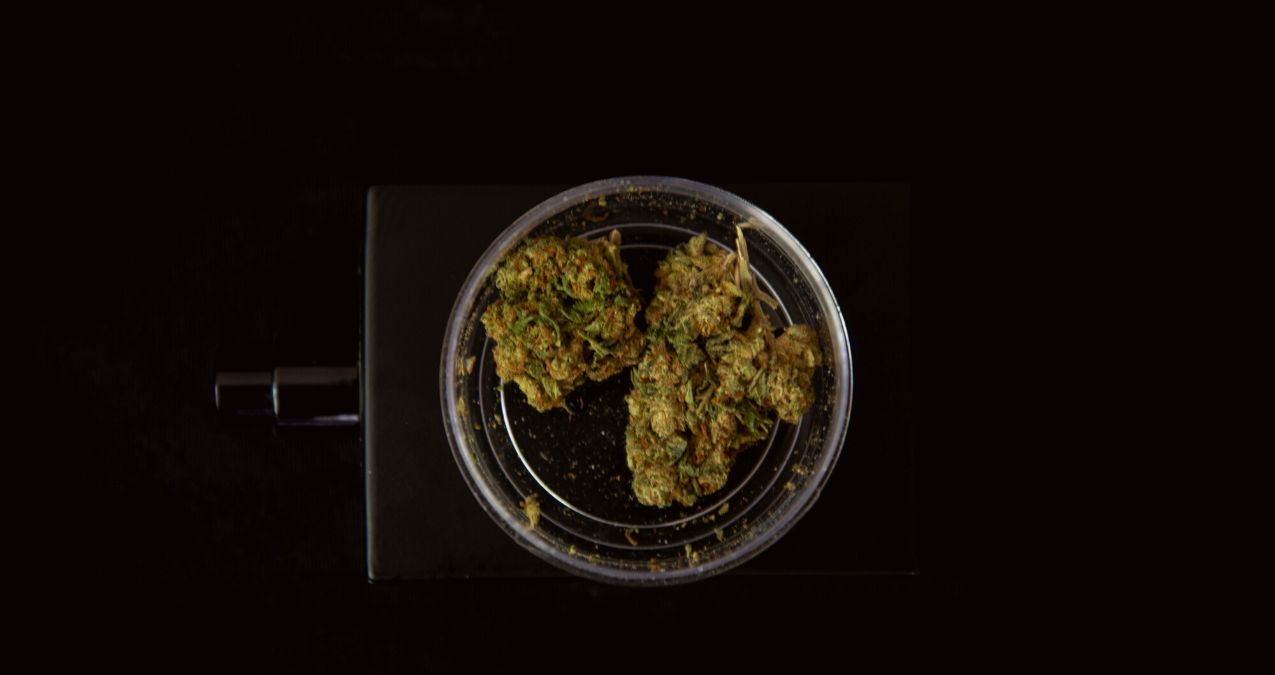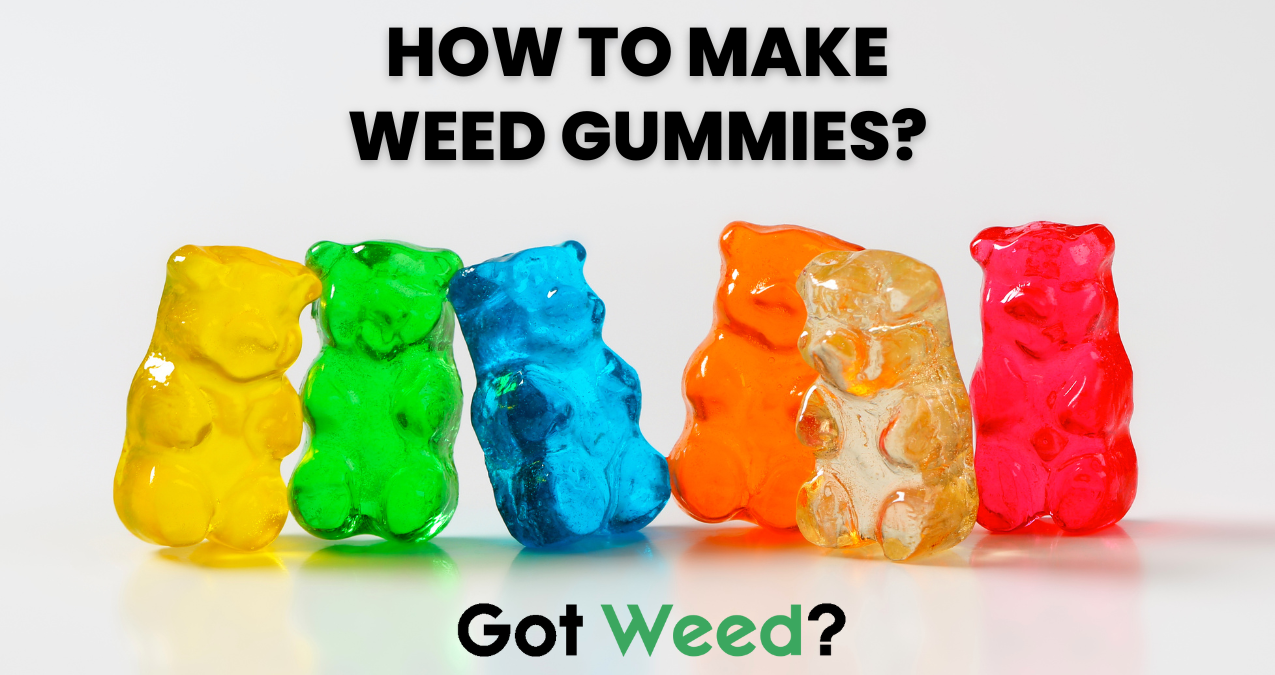The last few years have seen a significant shift in the cannabis sector in terms of innovation, product accessibility, declining prices for dried flowers, and rising demand for oils, edibles, and topicals. These modifications have forced cannabis businesses to consider product categories other than dried flower cannabis to boost sales and maximize earnings.
One such product is weed gummies. Every day, more people are consuming edible cannabis products. But of all the delectable options, cannabis gummies may be the most well-liked. Compared to brownies or cookies, they are lighter and simpler to digest. They travel well and keep their freshness longer than baked foods. They are not costly and will last you for a very long time.
These candies have a lot to offer, whether you mold them into adorable tiny bears or leave them in small, gooey balls. Although making weed edibles at home can seem like an impossible endeavor, it’s very straightforward. If you’ve never made gelatin candies at home, have patience because it might be challenging to get the ingredients to stick to one another. But at the end of the day, it’s easier to make them yourself in the flavor you enjoy.
Weed gummies

Fruit-flavored candies with THC added are known as “weed gummies.” Gummies are available in a wide range of flavors and dosages. Low-dose THC candies are very well-liked, especially those with 5mg or less of THC per serving.
Weed gummies are so well-liked because of how convenient and adaptable they are. They’ll go stale if you can’t finish a package of weed cookies right away after opening them. Cannabis gummi bears a long shelf life. If you only occasionally use edibles, a packet of gummies will last you for a very long time without going bad.
Getting the dosage right in your weed gummies
Homemade weed gummies aren’t as durable on the shelf as weed gummies you purchase. This is something to bear in mind as you calculate the THC content of each gummy. If you aren’t going to consume all of the gummies within a few days, preparing a large batch of cannabis-infused oil for a large batch of gummies might not be a good idea.
Your gummies will have additional ingredients besides oil, the majority of which will be made of gelatin. You need to know the volume of the ingredients in your recipe in order to calculate how much THC and CBD Olie you’ll need. A complete recipe may require up to 1/2 cup, or 8 tablespoons, of oil. You’ll need to do some arithmetic if you want each gummy to have 5 mg of THC.
You must calculate the THC content of your marijuana in order to complete this task correctly. Examine the packing. If the strain you’re smoking has a 20% THC content, there are 200 mg of THC in every gram of marijuana. A gramme contains 1,000 milligrams. In other words, one gram of marijuana has 40 gummies’ worth of THC.
You might need to make the cavities of the gummy mold smaller than the mold can handle, depending on how much mixture each cavity holds. To help keep the THC levels where you want them, you might want to mix your THC-infused coconut oil with ordinary coconut oil if the cavities are larger.
The math is somewhat challenging but it only needs to be figured out once! You won’t have to calculate it all again if you use marijuana that is the same potency each time and prepare every batch in precisely the same way.
It’s always best to be cautious and take less cannabis if you’re unsure. If you don’t feel anything after two hours, you can always eat another gummy.
What impacts do infused gummies have?
One of the best things about weed gummies is that you can both swallow them or chew them whole. As a result, the cannabis will quickly enter your circulation through sublingual absorption. Most edibles do not provide this advantage. Usually, the effects don’t kick in for 30 to 60 minutes after consuming other weed edibles. But weed gummies are different. Because there are so many mucosal membranes under the tongue and in the space between the cheek and gum, the effects of weed gummies start quite fast. Cannabis is absorbed by the bloodstream when you suck or chew on sweets.
Weed gummies have another advantage over other forms of infused sweets in that dosing is simpler. For a proper dose, one or two gummies are typically sufficient. Everyone is unique, of course, so some experimentation is probably still necessary.
Last but not least, you can control the ingredients when you manufacture your own sweets at home. You don’t need any unhealthy artificial sugars, preservatives, or additions. Furthermore, it can be challenging to find cannabis edibles in shops and dispensaries. Because they might appeal to minors, they have been outlawed in several countries. However, creating them at home is not prohibited by most countries where medical weed has been legalized.
Types of weed gummies
Based on the binding used, weed gummies are of two types – gelatin gummies and pectin gummies.
Taste, visual appeal, dose, and texture are all crucial considerations when creating edible gummies. Picking the proper kind of gelatin and other raw components is essential when manufacturing edible cannabis candies because the taste is likely the most significant of all these elements. Gummies are bonded together and given structural stability by the thickening substance gelatin. However, vegans frequently steer clear of gelatin because it is an animal product. Although the cheapest to create, pork gelatin is frequently shunned by both Jews and Muslims.
Pectin is a typical vegan-friendly substitute for gelatin for producing weed gummies. Fruits and plants are boiled with sugar to produce pectin. Pectin is a thickening substance that, like gelatin, can be used to keep most weed gummies in their desired shape. Weed gummies with fruit flavors are frequently made with pectin gummies.
Ingredients need to make weed gummies
- Cannabis-infused oil
- Cold water
- Gelatin or Pectin
- An emulsifier like sunflower or soy lecithin
Except for cannabis-infused oil, you can get the majority of these components in your neighborhood grocery store. You can buy the prepared oil, but if you want to create your own for your weed gummies, you can find the instructions below.
How to decarboxylate weed and make cannabis coconut oil

Cannabis-infused coconut oil is the first step in the process of making weed gummies. Regular ground cannabis is ineligible for use in your oil. Until heat is applied, the cannabinoids in your marijuana won’t change into their active condition. Your oil needs to be infused with THC, and the THC needs to be accessible. Decarboxylating is used in this situation.
Decarboxylation process
Your marijuana should be ground into chunks, not a powder. Aim for a grind that is about the size of a rice grain. Your marijuana won’t properly decarboxylate if your grind is too harsh. You’ll burn it to a crisp if it’s too fine.
A sheet of aluminum foil should be crumpled up and placed in the bottom of a glass casserole dish. On top of the foil, evenly distribute the weed in a thin layer. Put another sheet of aluminum foil over the top. Place it on the middle rack of the oven and bake it for 45 minutes at 220 degrees.
The cannabis should only be lightly toasted. The lighter greens should acquire a golden tinge. Avoid burning it to a deep shade of brown. While this is going on, it’s natural for your entire kitchen to smell like marijuana, but you should still check on the pan every 10 minutes to make sure the cannabis is toasting rather than cooking. Take your weed out of the oven after 45 minutes and your decarboxylated weed is ready.
Using a slow cooker
Place your decarboxylated weed in a small metal tea infuser. At the lowest setting, add your coconut oil to your slow cooker. Set the timer for three to four hours and add the tea infuser to the slow cooker along with the weed. Stir the oil and rotate the tea infuser every 30 minutes to ensure even dispersion.
When the oil is ready, remove the marijuana from the infuser and pour the marijuana-infused coconut oil into a container that may be stored in the refrigerator. If you’re not going to make your gummies right immediately, you can let the oil cool and save the extra.
Using a saucepan
Coconut oil should be heated in a saucepan on the stove once the cannabis has done decarboxylating. You can start adding the decarboxylated cannabis to the saucepan once the coconut oil has heated to roughly 135°F. Remember to stir the pan every 15 minutes as the stew simmers for at least 3 hours.
Using a double boiler
Using a double boiler is an alternative to using a saucepan. To make cannabis oil for weed gummies using a double boiler, you must add water to the bottom pan, coconut oil to the top portion, and decarboxylated cannabis while constantly stirring.
It is useful to indicate on your container how much THC is included in each tablespoon of oil. If there are any leftovers, you don’t want to return and realize that you forgot what you were working with.
Making weed gummies
Now that you have all the materials you need to manufacture weed gummies, emulsification is something you must keep in mind. Your gummies’ cannabis oil can combine with other ingredients through the process of emulsification, which also gives the entire gummy a consistent texture. Without an emulsifier, the oil will separate from the remaining gummy, which will ruin the texture of the gummy and reduce or remove the THC. Lecithin or soy is a typical emulsifier used in the production of cannabis candies.
A silicone mold is required if you’re producing gummy bears. Even other forms like worms or small balls will require some sort of mold. Otherwise, you’ll just have one big gummy, which will make it harder to administer the medication correctly.
It can be enjoyable to buy food coloring that matches the flavor you’ve chosen, however, it’s optional.
Follow these steps to create weed gummies:
- Put your preferred emulsifier, water, and cannabis oil in a pot and heat it on low.
- Until the mixture has a uniform texture, stir the saucepan. Add the gelatin or pectin after the oil and water have emulsified, stirring constantly.
- Avoid allowing the mixture to come to a boil and whisk the mixture continuously until the gelatin or pectin is completely dissolved.
- Pour the mixture through a sieve to remove any contaminants after the gelatin or pectin has dissolved.
- Next, fill your gummy molds using a dropper. Filling your molds before the liquid cools is crucial to prevent ingredient separation.
- Place all of your molds in the freezer for 2 hours after filling them.
After two hours, check on your gummies. If they separated, you didn’t completely combine the ingredients. You can theoretically still avoid wasting them by eating the contents of each cavity. If they are solid, remove them from the mold and put them in a container that can be kept in the refrigerator. They will keep good for two weeks.
Curing your gummies
- Cure the gummies by moving them to a wire rack for 12 hours at room temperature, or uncovered in the fridge if the atmosphere is too humid. This will give the gummies a firmer texture. Before placing the gummies on the wire rack, if there is too much humidity, toss them in 1/4 cup of the cornflour, if using. After the cure, use a pastry brush to remove any extra cornflour or cold water rinse to remove the cornflour, then let the gummies air dry.
- Combine the remaining 2 tablespoons of cornflour and the powdered sugar, if using, in a bowl to give your gummies a little extra sweetness. Gummies should be coated uniformly in this mixture before being brushed off any extra. The gummies won’t stick to one another thanks to the cornflour.
- Keep for up to 5 days in a cool, dry room temperature place. Gummies can be kept in the refrigerator for up to two weeks if they are kept in an airtight container. Additionally, gummies can be kept for up to six months in the freezer.
Perks of chewing weed gummies
Storing them is simple
Cannabis gummies are a terrific way to start your marijuana session for a variety of reasons. However, one of its best features is the convenience it offers. It won’t get harmed or polluted while you store it, so you can do it anyplace.
You can keep it in the fridge for as long as you like. Given that it is similar to candy, you won’t have to worry about it going bad soon. The fact that it will make you high is the sole thing that sets it apart.
Simply take them out of the fridge and enjoy when you’re ready to snack on them. Literally, it’s as easy as munching on candy.
Controlled Dosing
Making cannabis gummies is crucial if you’re cautious about the cannabis dosage you take. Each serving contains a specific quantity of cannabis, which makes dosing easier. This is a practical technique to control your intake and prevent overindulgence.
You can be discreet
Gummies made of weed are a great method to dose when traveling. They are discreet, easy to consume, and compact. Just watch out for friends and relatives asking for candy if they spot you eating it! Unless, of course, you want to share.
Conclusion
Weed gummies are undoubtedly among of the most well-liked edibles that can be made with marijuana’s infusions, while there are many other options. The numerous advantages that these sweets have make it easy to understand why. Although many are daunted by the prospect of making these treats on their own, it’s really straightforward as long as you have the correct ingredients and the right tools. Once you give it a try, your creativity will take over, and you’ll want to experiment with various strains, juice flavors, and even colors.
Just keep in mind to consume responsibly and keep out of the reach of kids and unknowing friends and family since cannabis gummies can be mistaken for regular candies.

